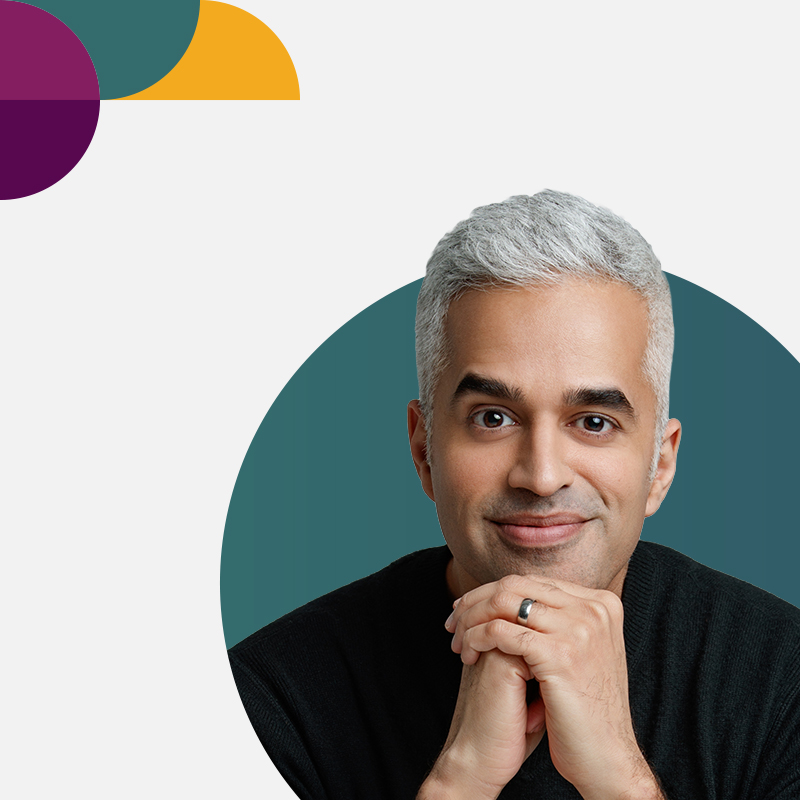Career development is a complex process, especially across an entire workforce. But with the right tools and resources, employees can take control of their own career development. An effective career development plan helps employees determine where they want to go, provides direction and guidance, and empowers them to pursue their goals.
Help your employees achieve their highest career aspirations through career development plans that encourage employees to harness their potential.
What Is a Career Development Plan?
A career development plan is an action plan employees can use to reach their career goals. With this plan in place, employees can see what actions and behaviors will yield a tangible impact on their career progression.
Much like corporate planning and business goals, career development planning provides direction for growth, tracks progress in a performance review, and keeps employees on track.
Some of the language around career development is used interchangeably with other concepts. Before you can help employees write their career development plans, It’s important to clarify what career development is not.
Professional Development vs. Career Development
Professional development refers to a broader process that accounts not only for career development but also personal development. Whereas career development plans are tightly focused on steps employees can take to further their career trajectories, professional development plans are tailored to each individual employee’s personal and professional growth.
Career development is an essential part of professional development that prompts employees to look at their career paths with intention.
Career Growth vs. Career Development
Career growth is another term often used interchangeably with career development, but they aren’t the same thing. Career growth refers to an employee’s overall professional goals — their endgame.
Career development is narrower in scope, but it’s a key piece of that broader journey. Career development plans serve as a catalyst for employees to acquire the skills and experiences they need to take their careers to the next level.
Why Do Career Development Plans Matter?
Progress requires clear direction and a road map to guide you. Career development plans offer the guidance employees need to take action toward their career goals.
Without a clear plan, milestones, and accountability from managers and HR, employees can lose interest in their work and become disengaged. But when they’re working toward a career they’re invested in, employees tend to be happier, more interested in learning and innovating, and better performers.
The process of drafting career development plans can drive engagement, too. This stage often coincides with goal check-ins or performance enablement conversations. Drafting a career development plan is a collaborative process but also gives the employee the reins. Managers, trained as career coaches, help employees identify what they want to pursue, then connect them with learning opportunities to make sure they achieve their career goals.
Career development conversations are especially important because not everyone follows a linear career path. Not all employees, for example, are cut out for — or interested in — management. A career development plan helps employees be intentional about where they want to go while offering an actionable plan to get there.
When Is the Right Time to Create a Career Development Plan?
Career development plans should be available to every employee. And that planning should start at the beginning of each employee’s tenure — as early as onboarding.
HR shouldn’t be the only driver of career development planning, as that will be taxing on them and produce suboptimal results. In today’s workplace, people development jobs aren’t limited to HR anymore. Staff development makes up a big part of your managers’ daily tasks, and with the right training, they can become the driving force behind workforce career development planning.
Equip managers with staff development plan templates for different stages in the employee lifecycle, starting with onboarding. This helps managers match career planning and development with the appropriate employee stage. To improve buy-in and participation, integrate career development planning into existing processes, such as performance enablement.
What Should Be Included in a Career Development Plan?
The components of a career development plan are designed to prompt deep thought and intention regarding career paths. Follow these best practices with your workforce.
Identify Goals and Field of Interest
An employee’s career goals don’t have to follow their current trajectory. Don’t assume that an employee only wants straight-line advancement. Train managers to understand employees’ strengths and how they can best apply them, either within their current trajectory or in some other role within the organization.
Managers must also shake themselves of the mindset that their best talent must stay within the team. To prevent talent hoarding, consider rewarding managers for making good referrals for internal talent.
Before you can take growth and engagement to the next level, you need to identify where employees want to take their careers. This is an essential first step toward creating an employee development plan.
Get Clear With Expectations
To achieve their career development plans, employees need support from their direct managers and HR. With multiple people involved in this effort, it’s crucial that everyone is aligned on their expected outcomes.
During the planning process, be sure to listen effectively, define terms, and agree upon a shared calendar. If one employee’s goal is to work a gig in a different department, for example, the manager may suggest shadowing a colleague three times this quarter. To maximize that time, make sure to define the purpose, process, and desired outcomes of each of those sessions.
Set Measurable Goals
Once all parties are aligned, it’s time to get even more concrete by setting measurable goals. To do this, consider implementing an objectives and key results (OKRs) model.
Each employee’s objectives are where they want to be in their career development by the end of a set time period (typically a quarter). Each smaller objective should feed into that employee’s long-term career goals.
The key results demonstrate that the employee has met their development objectives. Employees should work with their managers to identify two to three key results that indicate they’ve met a given objective.
Encourage Employees to Write Down Their Plans
Writing down or recording each employee’s career development plan can help make their plans feel more real — and their goals more achievable. One option for tracking is through your organization’s learning and development or performance management software.
Encourage employees to take an active role in drafting career development plans and tracking progress. This gives them more control over their development and growth, which can improve their outcomes — and retention.
Identify Potential Roadblocks
Build flexibility into employee career development plans. One way to do this is by anticipating potential roadblocks to employee success.
One common roadblock that employees might encounter is the challenge of balancing their current workload with the training and development needed for their next role. One way to overcome this roadblock is to integrate development within employees’ day-to-day responsibilities, such as participating in projects or experimenting with a new role within the team.
Keep Your Workforce Accountable
Maintaining accountability can be a challenge for any type of development plan. Build regular check-ins, transparent tracking, and meaningful stakes (a bonus, for example) into your employee development plan template.
Integrating career development plans into your performance management or goal alignment software can improve transparency and create a sense of ownership and accountability for the employee and their manager.
Career Development Plan Template
Don’t leave managers and employees to figure this out on their own: Draft a career development plan template to guide their efforts. Templates create consistency and promote accountability. Learn about essential components of an effective career development plan template.
Short-Term Career Goals
Short-term career goals provide quick wins for employees and help them remain agile. As employees achieve short-term goals, they learn more about their strengths and interests, which may evolve during the career development process.
Short-term career goals also build toward each employee’s long-term goals, driving career growth in a way that’s manageable and sustainable.
Long-Term Career Goals
Long-term career goals provide direction for each employee’s career development plan. Long-term goals can be aspirational, as employees have more time to work toward them. To keep these goals from seeming too distant or abstract, break them down into smaller, more feasible pieces.
Remember that long-term goals are subject to change as employees gain more experience and perspective. Leave room in the template to account for these adjustments, and prompt employees to regularly revisit these goals with their managers.
Learning Opportunities
Each employee’s career development plan should include concrete learning opportunities that can bring their goals to life. Learning opportunities aren’t limited to traditional training or self-directed learning modules. Learning can be dynamic and engaging, encouraging employees to apply what they learn in real-time.
If an employee wants to move into project management, for example, a great learning opportunity might be leading a small project for their team. Include some high-level, general ideas in the template to help managers and employees brainstorm the best options for their circumstances.
A collection of learning opportunities with a targeted purpose can also serve as key results. As employees check them off, their progress can indicate that the employee is achieving their objectives.
Accountability Resources
A good career development plan template includes opportunities for promoting accountability. It’s easy for an employee to become absorbed in their day-to-day routine and lose track of their aspirations.
Setting regular check-ins helps employees remain accountable. Include accountability tools into the plan, including meetings with managers and opportunities for reporting progress.
Data-Driven Records
Finally, include prompts for tracking employee growth over time. This may dovetail with performance reviews, which provide performance data that can offer insights into each employee’s growth. Without this crucial data, it can be challenging to see where an employee has made gains or where they excel. Knowing those answers is key to achieving the best career development outcomes for each employee.
Set the Stage for Growth
The benefits of career development planning aren’t limited to individual employees. They reap the greatest rewards in improved career satisfaction, enhanced skills, and goal progress, but the organization also benefits.
Career development planning supports your talent strategy by helping employees see a future within your organization. Organizations can realize greater engagement and retention while creating a culture of learning, which is essential for embracing agility as work evolves.
The career development plan is a key part of your business’s growth strategy and can elevate your workforce from good to exceptional.
Discover four ways to reduce employee turnover at your company.







